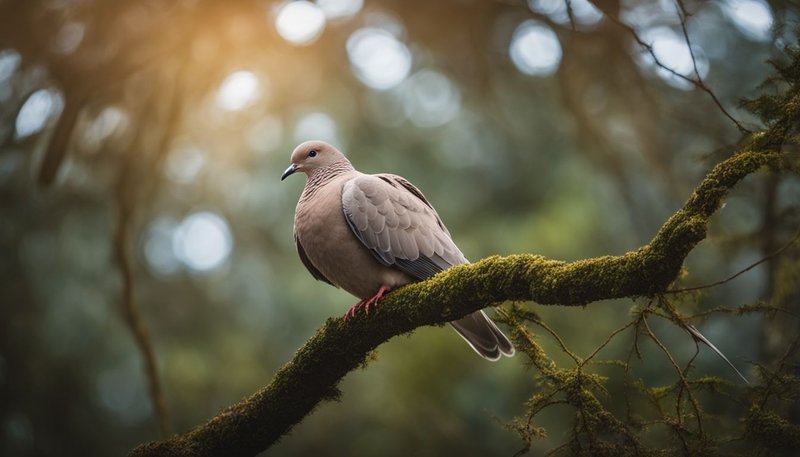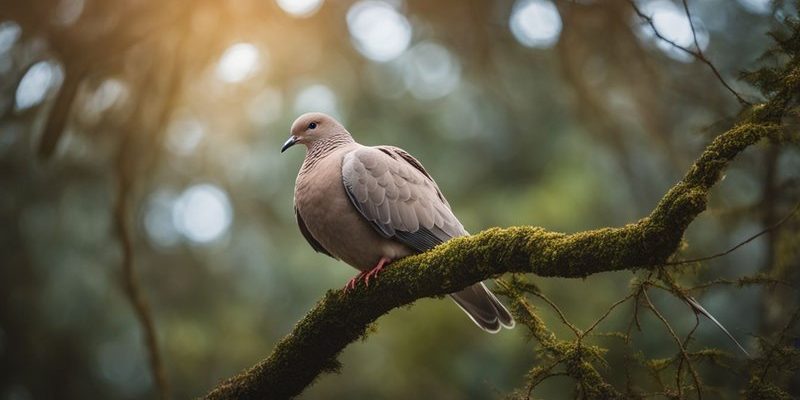
Doves show up in myths, art, and even religious texts across the globe. They’re more than just pretty birds; they often carry messages from the divine or symbolize hope in dark times. Let’s take a closer look at how these lovely creatures have found their way into the hearts and minds of people everywhere.
Doves as Symbols of Peace
One of the most common associations with doves is peace. This link dates back centuries, often symbolizing a truce or a resolution to conflict. For instance, in the biblical story of Noah’s Ark, a dove is sent out to find dry land after the flood. When it returns with an olive branch, it’s like a beacon of hope, signifying the end of hardship and the start of a new beginning.
In many cultures, releasing doves at weddings or memorials is a powerful gesture. It represents love that is eternal or souls being freed. When you see white doves soaring into the sky, it’s hard not to feel a wave of calm wash over you. It’s like a visual reminder that peace is not just possible; it’s something we can all strive for.
Doves in Mythology and Folklore
Doves are not just passive symbols; they play active roles in various myths and stories. In Greek mythology, the goddess Aphrodite, who embodies love and beauty, is often depicted with doves as companions. This connection highlights the bird’s role in love stories and romantic endeavors throughout history.
In many Indigenous cultures, doves are seen as messengers between the human world and the spirit realm. Their cooing sounds are thought to communicate with spirits, providing guidance and wisdom. It’s fascinating to think about how a simple sound can carry so much meaning! These tales are a reminder that nature has many secrets, and these birds are often the bridges between us and the unknown.
Cultural Significance of Doves Worldwide
Across the globe, you’ll find that doves mean different things to different cultures. In Hindu culture, for example, these birds are often associated with the goddess Lakshmi, symbolizing prosperity and good fortune. People may release doves during festivals to encourage positive energy and invite blessings into their lives.
In Japan, the dove represents a love that is eternal, often associated with the Japanese custom of releasing doves during wedding ceremonies. It’s a beautiful tradition that not only celebrates love but also hopes for harmony and happiness in the couple’s future. When you think about it, these customs are ways people have creatively connected to the concept of love and spiritual significance through their environment.
Doves in Literature and Art
Doves have made their mark in literature and art, becoming symbols that resonate deeply. You might recall the famous poem “The Peace of Wild Things” by Wendell Berry, where doves symbolize the tranquility and simplicity of nature. Their images have adorned canvases, from Renaissance paintings to modern art, capturing the essence of their grace and beauty.
In literature, doves often signify hope or love. Think about how many love stories feature doves as tokens of affection! They remind characters—and readers—that love can transcend borders and hardships. Each time a dove is mentioned in poetry or prose, it serves as a gentle nudge to embrace the softer, more delicate side of life.
Environmental Symbolism and Protection of Doves
With their natural beauty, doves also carry an important message about protecting the environment. As urban areas expand, their habitats dwindle, and the symbolism of peace could be threatened. Many cultures teach that caring for these birds is akin to caring for the planet. When we look after our feathered friends, we symbolically nurture peace in our communities.
Conservation efforts often highlight doves as part of broader initiatives to protect biodiversity. When you support local wildlife organizations or participate in community clean-ups, you’re not just helping doves—you’re contributing to a larger tapestry of health and harmony in your environment. Here’s the thing: nature thrives when all its elements, including doves, are cherished and protected.
The Spiritual Connection of Doves in Rituals
In many cultures, doves play essential roles in spiritual rituals. For instance, during religious ceremonies, doves are often used in offerings, symbolizing purity and connection to the divine. This practice serves as a reminder of humanity’s connection to something greater than ourselves.
In some traditions, doves are released at significant moments, such as during a baptism or a coming-of-age ceremony. It’s a beautiful sight that signifies a new journey or phase of life. It’s as if the release of a dove is a small but powerful reminder that we are all interconnected and that new beginnings are always possible.
The Modern Cultural Impact of Doves
In today’s world, doves continue to be a significant symbol in popular culture. Whether it’s in movies, music, or art, doves are often used to signify peace or love. You might see them in children’s cartoons as friendly characters or in films depicting reconciliation. Their universal appeal helps carry the message of hope and understanding to new generations.
Moreover, the iconic image of a dove carrying an olive branch is often used in activism, advocating for peace in times of conflict. This symbol transcends language and cultural barriers, making it a powerful tool for unity. As we navigate a world that sometimes feels divided, the dove remains a gentle reminder that peace is achievable.
Closing paragraph:
The role of the dove in local cultures and folklore is fascinating and layered. From representing peace and love to being spiritual messengers in rituals, these birds have played significant roles throughout history. They remind us of the beauty that exists in harmony and the vital connection we share with nature. As we explore these rich traditions and meanings, we can appreciate how doves inspire us to nurture peace, love, and understanding in our own lives. So, the next time you see a dove, think about the stories behind it—a symbol of hope that spans cultures and time.

